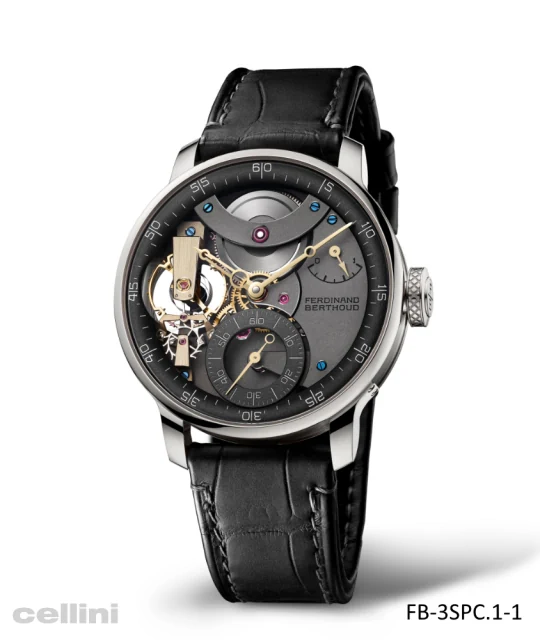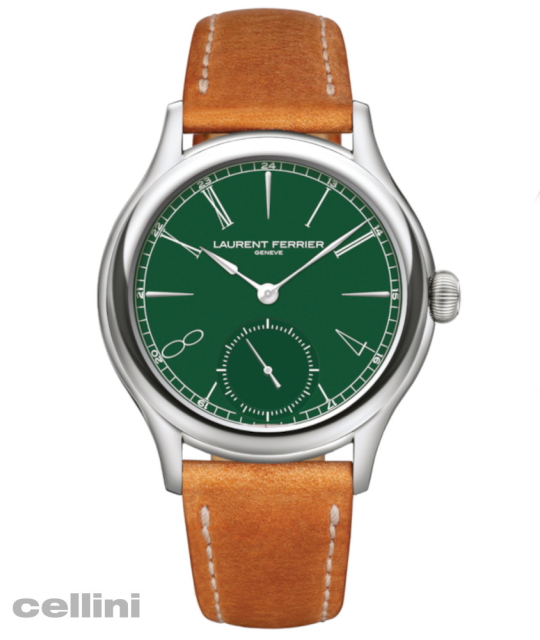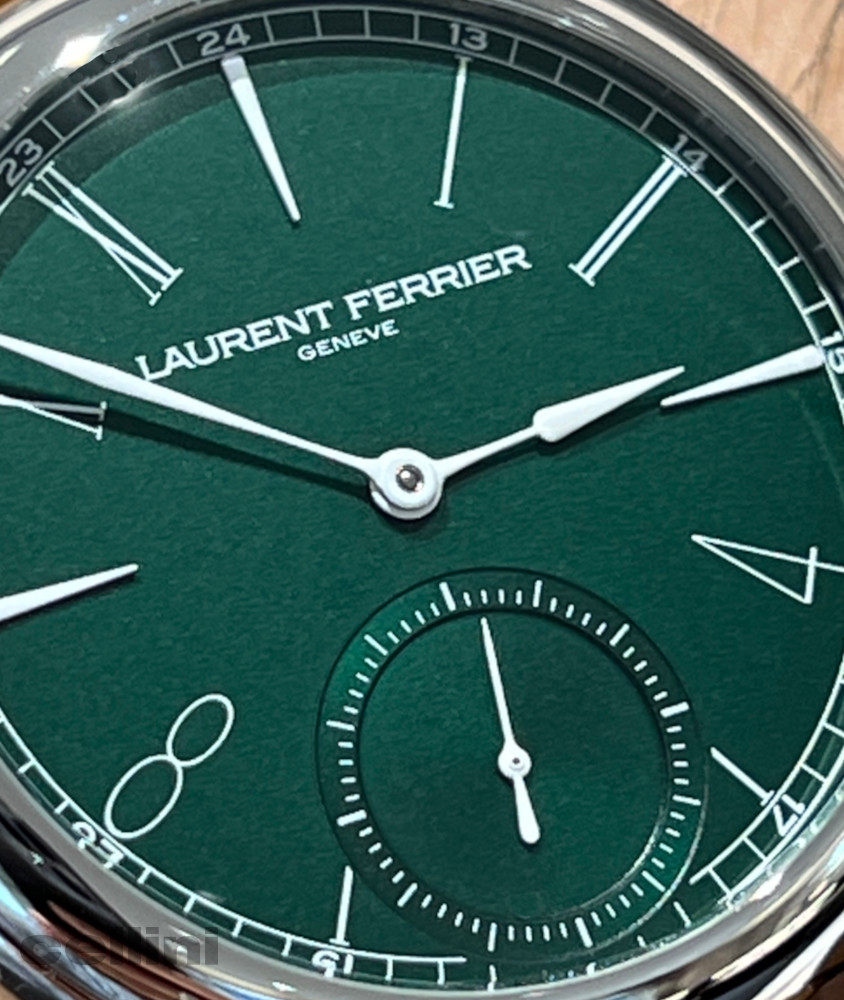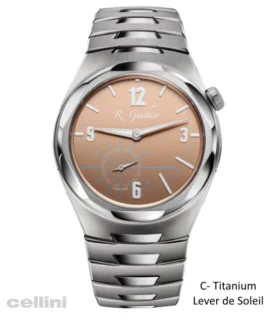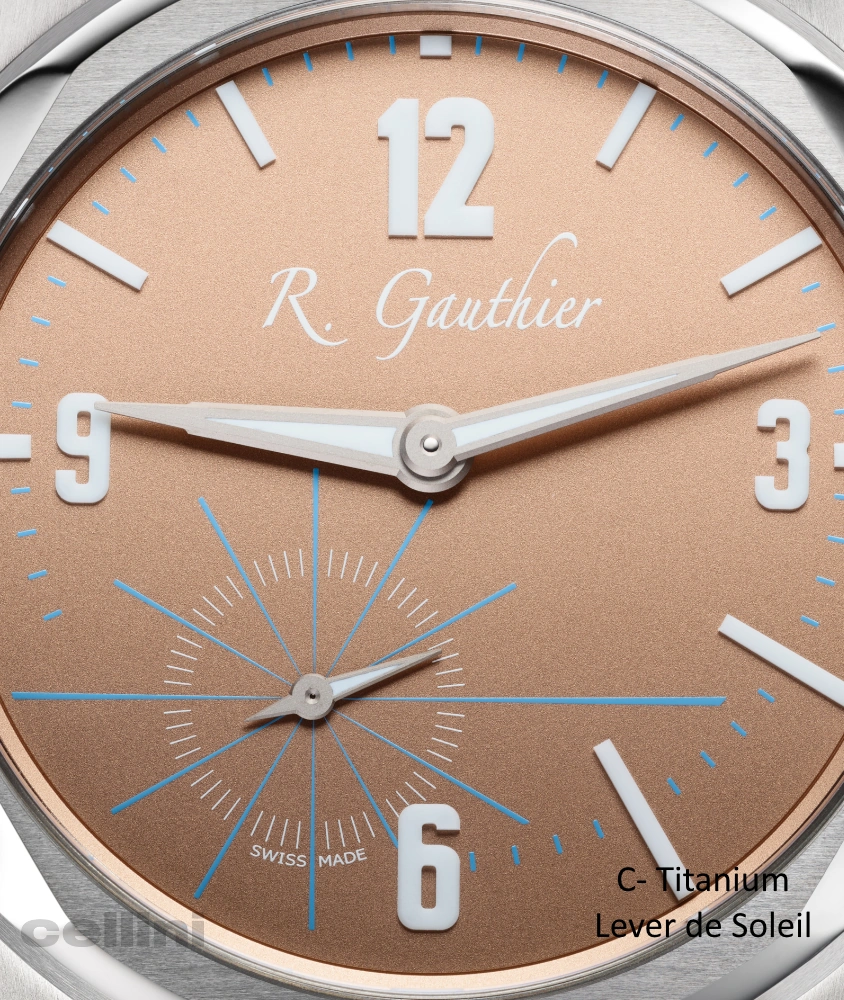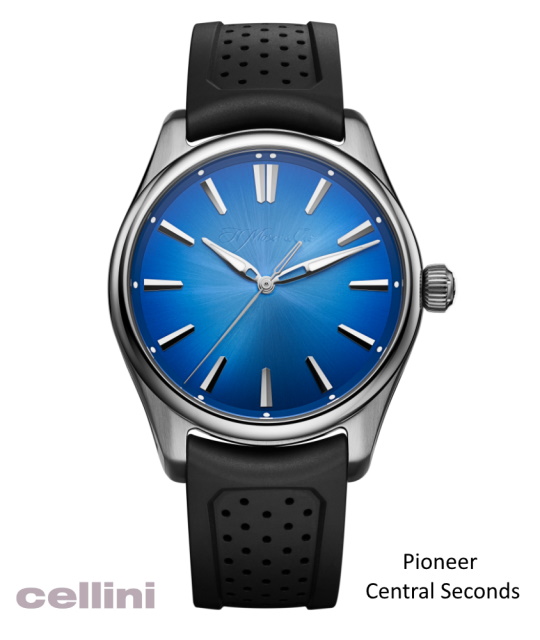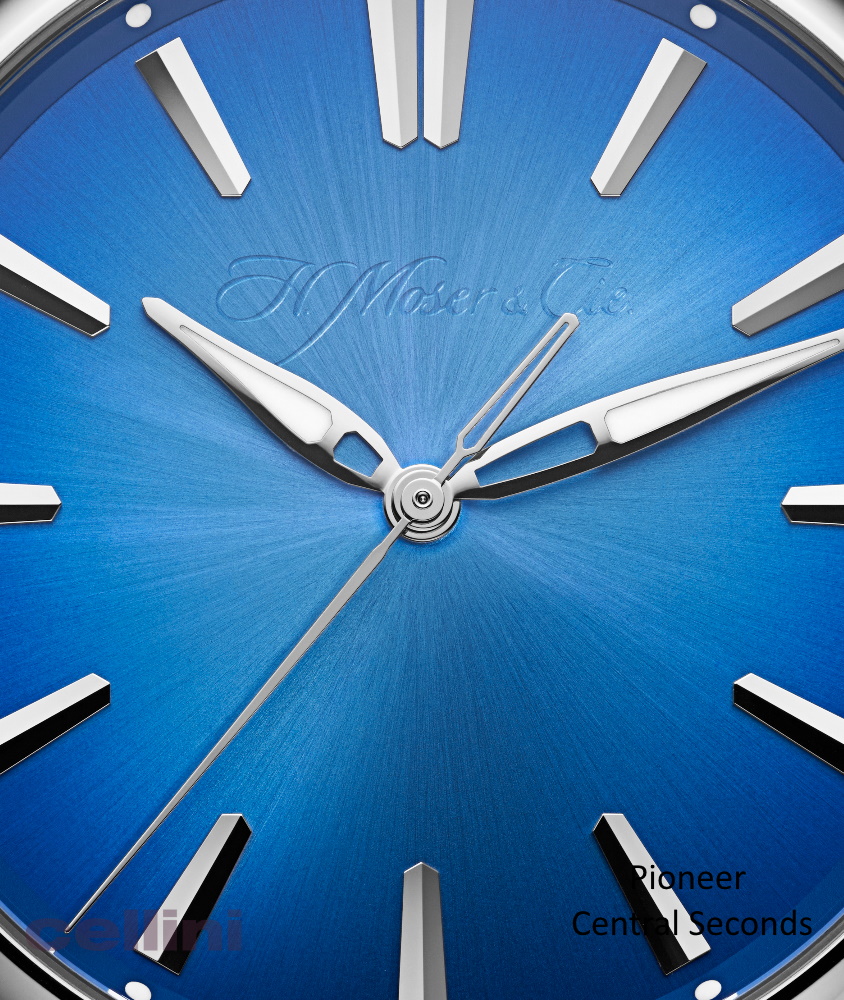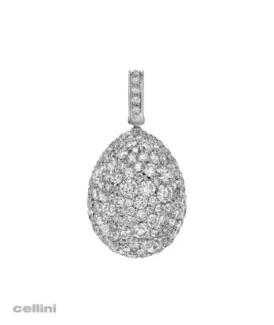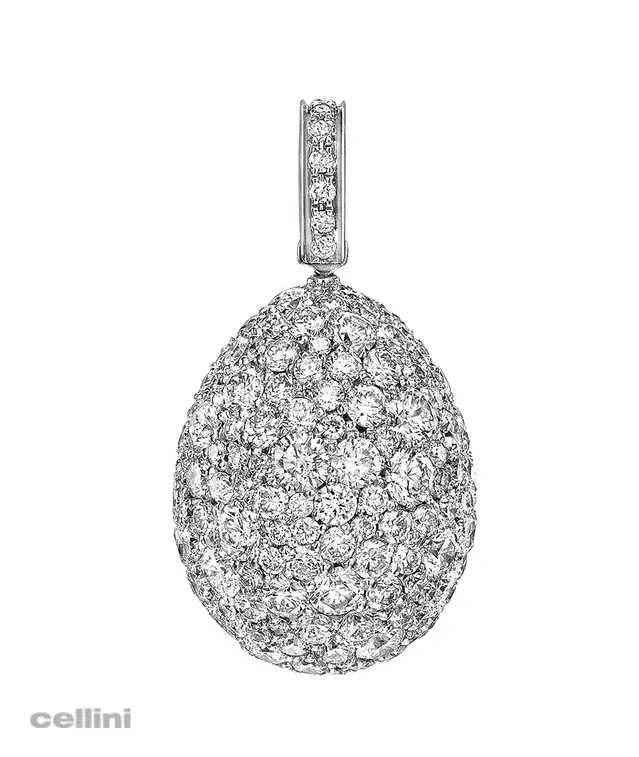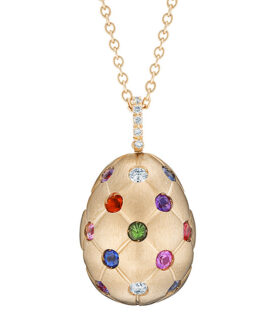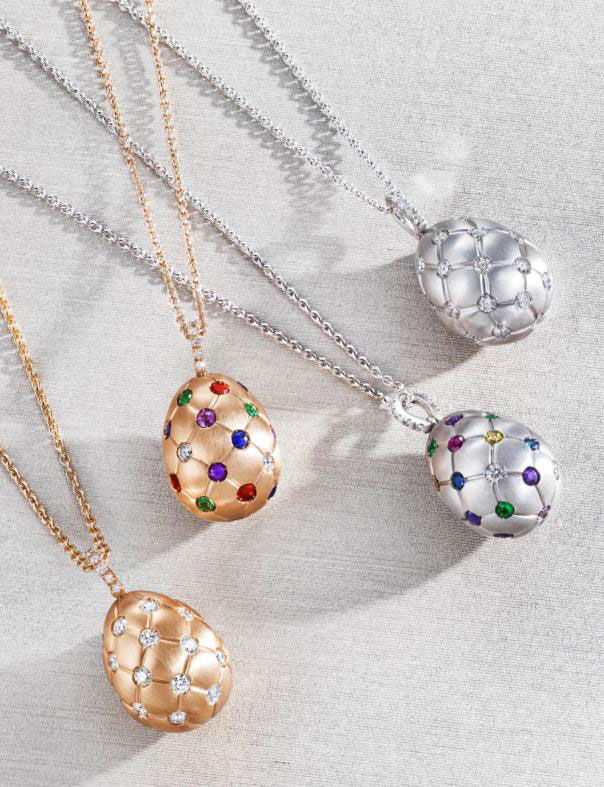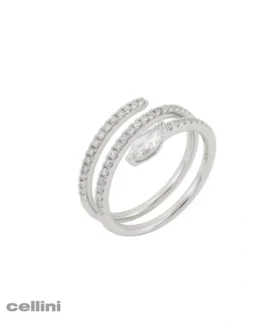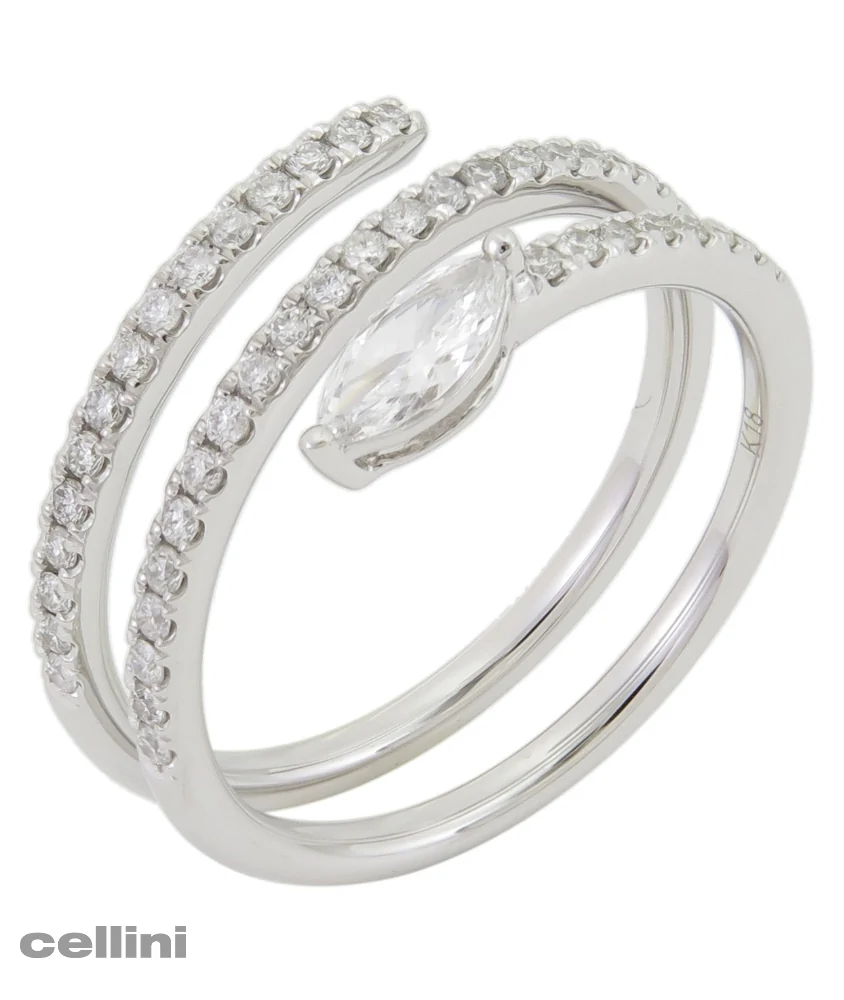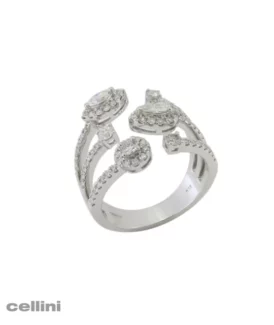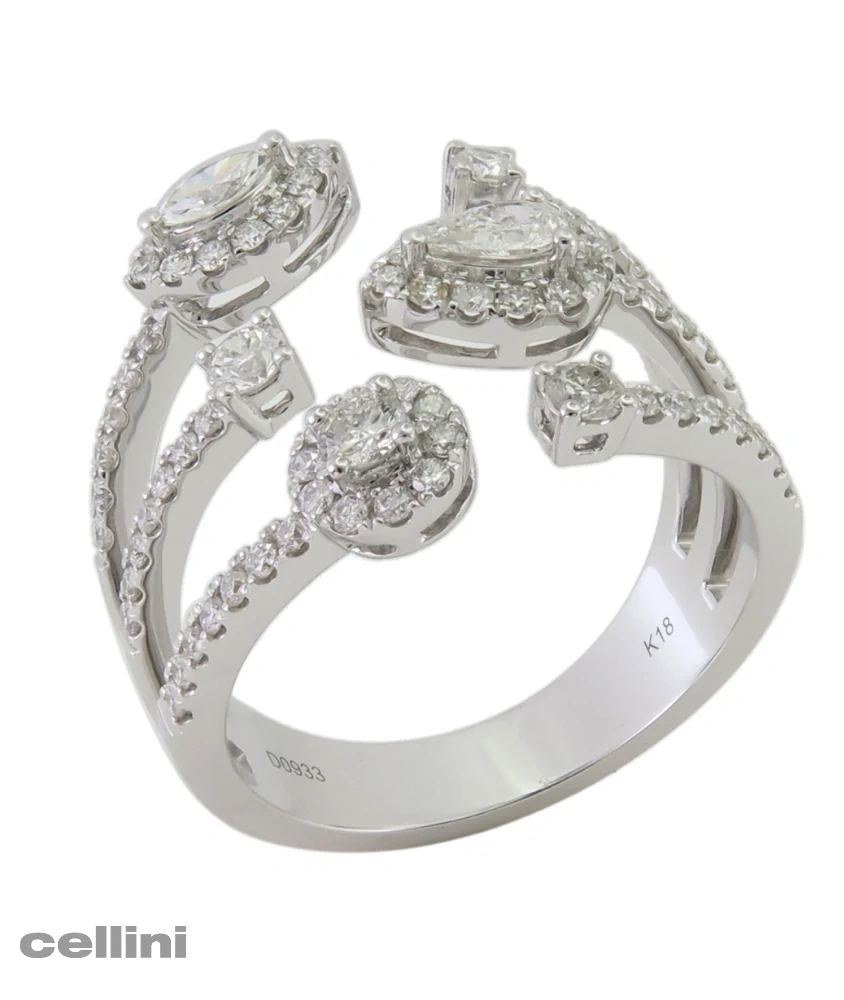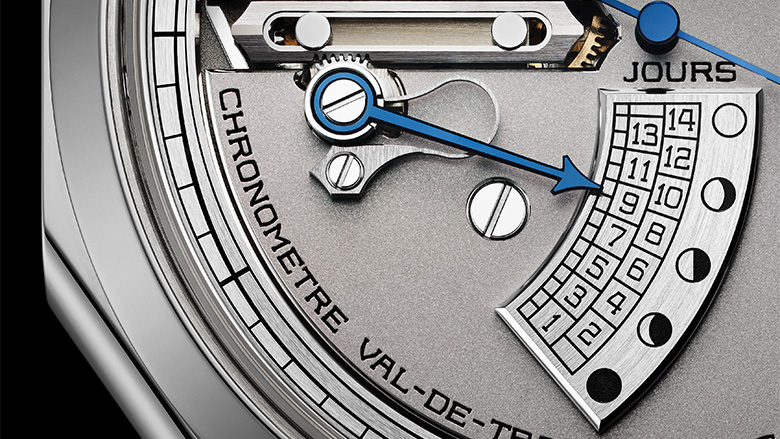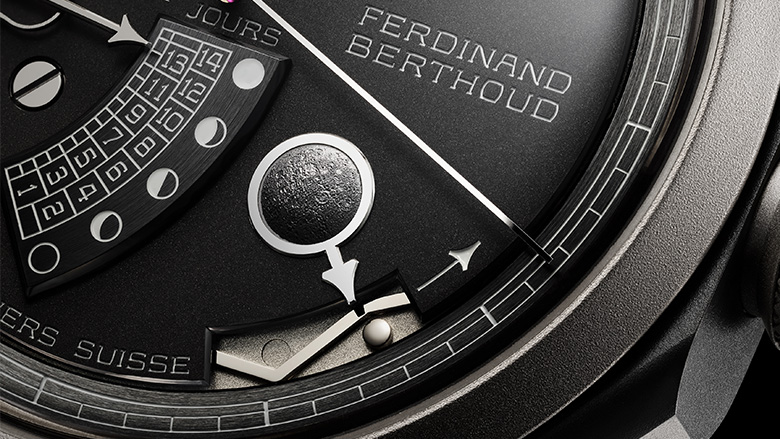
Meet the Chronomètre FB 1L
Imbued with the scientific spirit of the Enlightenment, Chronométrie Ferdinand Berthoud unveils a new experimental collection, combining the in-house tourbillon movement with a new display of the age and phases of the moon: the Chronomètre FB 1L.
Available in two ten-piece limited editions – with a case in white gold and black ceramic lugs, or in anthracite ceramised titanium & sandblasted white gold, this new collection displays the hours and minutes on a dedicated subdial at 12 o’clock, seconds in the center and the 53-hour power reserve on the back of the movement. A large hand at 6 o’clock indicates the age and phases of the moon in a continuous back and forth movement. This patent-pending complication, combined with the constant force of the FB-T.FC.L caliber, ensures astronomical precision corresponding to a one-day difference in 577 years of operation.
Truly at the crossroads between astronomy and chronometry, the Chronomètre FB 1L pays tribute to Ferdinand Berthoud’s work on chronometric precision and the calculation of longitude. It was to this end that the master watchmaker designed his famous marine chronometers, which inspired the creation of the FB 1L collection.
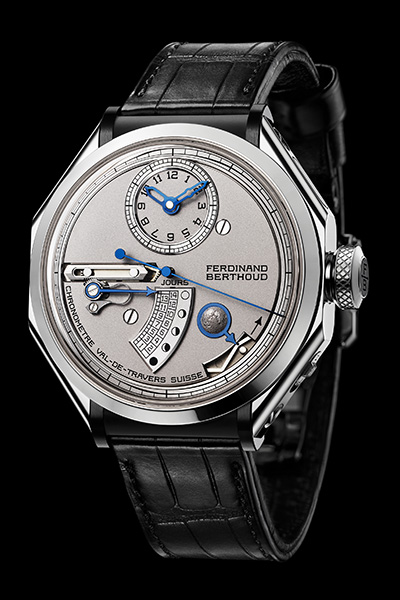
At the same time, at the same location, the knight Jean-Charles de Borda also submitted his first works as an engineer, a few years later, embarking on various ships to clarify the calculation of longitude. For these missions, he used measuring instruments created by Berthoud.
This collaboration between watchmakers, engineers and sailors forms the essence of Ferdinand Berthoud’s period, the famous age of Enlightenment, which he lived through in its entirety. Its purpose was to disseminate and enhance knowledge. Ferdinand Berthoud actively contributed to both missions, as well as writing a large number of articles relating to horology for Diderot and d’Alembert’s Encyclopaedia – the first systematic attempt to provide an exhaustive summary of human knowledge – as well as authoring 11 watchmaking treatises in 30 years.
Berthoud indeed dedicated his entire life as a researcher and watchmaker to the enhancement of knowledge. His countless works on chronometric accuracy and longitude calculation were regarded as authoritative for decades. A master watchmaker at only 26 years of age, he devoted a large part of his work to marine chronometers, essential instruments for accurate measurements related to the calculation of longitude.
As early as 1752, the accuracy of these readings was greatly improved thanks to an instrument optimized by the same Jean-Charles de Borda, after whom it was named the Borda circle (also known as a repeating circle). This instrument was designed to measure angular distances by repeating the same observation several times on the circle without returning to zero. Its particularity: the more the measurements it performs are repeated, the smaller its margin of error. The Borda circle was the essential link that made it possible to pass from the octant (with an accuracy of 150 nautical miles, or more than 270 km) to the sextant (accurate to 0.2 miles, or 370 meters).
The Borda circle was conceived as an improvement of the reflecting circle invented in 1752 by Tobias Mayer, a German astronomer known for his lunar tables, which made it possible to determine the position of the Moon and hence longitude in a precise manner.
The Chronomètre Ferdinand Berthoud FB 1L is a tribute to these pioneers who combined their knowledge to achieve a level of chronometric and astronomical precision that would change the course of history
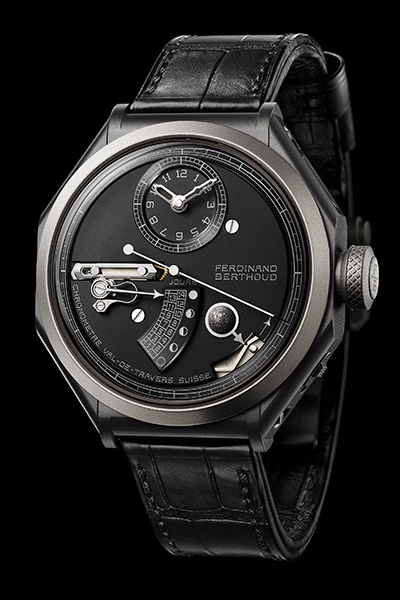
The age and phases of the moon are two separate measurements. The moon phase is the most common in watchmaking. This is the complication that visually indicates the different lunar cycles. The moon phase is divided into four phases: new moon, first quarter, full moon and last quarter. A lunation or lunar cycle is the time interval between two new moons. A symbolic and aesthetic complication, the moon phase does not, however, offer the accuracy necessary for astronomical use.
The age of the moon is a more accurate indicator that counts the number of days since the last new moon. This veritable scientific measuring instrument, coupled with the chronometric measurement of time, made it possible to determine longitude at sea with unparalleled accuracy nearly 270 years ago.
For the first time, the FB 1L collection combines these two instruments: a chronometer and an indicator of the age and phases of the moon within the same model.
Constant Force: The 100% in-house caliber of the Chronomètre FB 1L features an original suspended fusee-and-chain construction. It delivers a constant force to the escapement throughout the operation of movement, from its first turn of the crown to complete winding, thus achieving a 53-hour power reserve.
Tourbillon With Direct-Drive Seconds: The movement also features a tourbillon with direct-drive seconds, compensating for the variations in rate induced by the different positions the watch adopts throughout the day. Direct-drive seconds are made possible by the correlation between the seconds wheel and the wheel driving the tourbillon carriage.
Age Of The Moon And Progression Of The Lunar Cycle: Finally, for the first time, Caliber FB-T.FC.L is complemented by a patented complication: the age of the moon. This consists of two indications. The first is the display of the moon’s age in days, marked from 1 to 14 on a sector swept over by a hand moving back and forth. Day “1” is the first day since the new moon. Facing this “1” is a circle symbolizing the latter. The next three quarters are spread over the same sector as the days go by. Facing the 14th day is a solid disc, symbolizing the full moon. At this point, the hand performs a gradual backward move passing through the same quarters in the opposite direction: three quarters, two quarters, one quarter, until the return to the new moon.
This display of the age of the moon is complemented by another function revealed through a dial opening between 4 and 5 o’clock, showing the current moon phase, waxing or waning, thereby indicating whether the moon-age indicator hand is rising (up to day 14) or returning (to the new moon). Since this hand progresses at a rate imperceptible to the naked eye, this precious moon-phase indication makes it possible at a single glance to see whether one is heading towards a full moon or a new moon.
This age-of-the-moon display is provided by an arrow surrounding a half-sphere accurately depicting the two large faces of the Moon – visible and hidden – on both versions of the FB 1L collection.
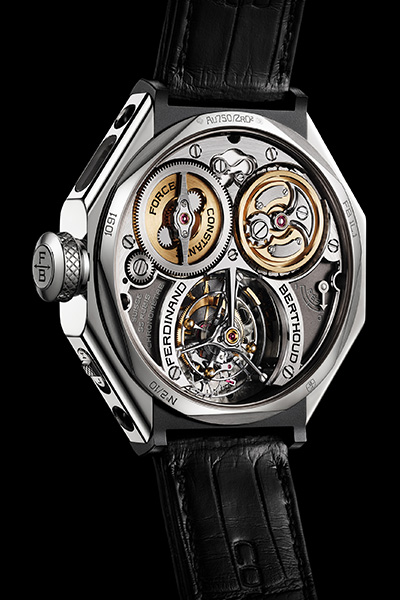
This invention earned him the title of master watchmaker a year later, by decree of the King’s Council. This contemporary interpretation serves to provide a disc-free display of the age of the moon by means of a hand moving back and forth with an accuracy of 29 days, 12 hours, 44 minutes and 15 seconds – corresponding to a mere one-day difference in 577 years of continuous operation. This exceptional result is made possible thanks to the large number of teeth on the moving disc revealed between 4 and 5 o’clock. The Chronomètre FB 1L thus achieves a degree of accuracy in displaying the age of the moon that exceeds conventional moon phase displays, most of which remain accurate over a period of “only” 122 years.
The accuracy of each movement in this collection is attested by a chronometry certificate issued by the Official Swiss Chronometer Testing Institute (COSC).
The unique features of the Ferdinand Berthoud movement are the subject of four patents, now supplemented by two other patent applications for the age-of-the-moon mechanism specific to the FB 1L models.
The Case: The distinctively shaped case is based on the architecture of the marine chronometers designed by Ferdinand Berthoud from 1760 onwards, inspired by his Marine Clocks, and their gimbal suspension in particular, which allowed the on-board chronometers to remain permanently in a horizontal position.
For the FB 1L collection, the case was completed for the first time with a selector switch placed between 4 and 5 o’clock which enables the wearer to choose between two positions, L and H, to set the age of the moon or the time.
Two versions of the Chronomètre FB 1L are available.
The FB 1L.1 “Near Side of the Moon” model favors a warm and luminous approach reminiscent of the visible face of the Moon and the intensity of the full moon. The piece has a case middle, side elements and crown in polished white gold. Its lugs are made of black ceramic.
The FB 1L.4 “Far Side of the Moon” version evokes the dark and mysterious tones of the Moon’s hidden face. This time, its white gold case middle is sandblasted and, in place of ceramic, the lugs and side elements are made of dark grey ceramised titanium. On average four times harder than standard titanium, ceramised titanium is part of the sustainability approach adopted in the making of Ferdinand Berthoud creations, which has already led the manufacture to develop a carburised steel with similar properties.
Each piece will be issued as a numbered 10-piece limited edition.

